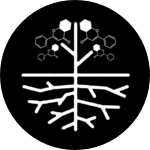About This Project
Nitrogen-fixation for fertiliser production is extremely energy-intensive, accounting for 80% of energy use in agriculture. Nitrogen is essential for plant growth but cannot be directly accessed from the atmosphere by plants despite its abundance.
Our goal is to engineer a bacterium called Pseudomonas Fluorescens, this bacteria can live in plant roots and will be able to attract other bacteria that make nitrogen from the atmosphere available to plants.
Ask the Scientists
Join The DiscussionWhat is the context of this research?
Over time farming has become more Intensive in order to increase food production and land productivity, this is due to the needs of society and consumers' expectations of food availability. This profound shift also has environmental impacts, especially through the increased use of Nitrogen fertilisers to increase crop yield.
Nitrogen-fixation for fertilizer production is extremely energy-intensive, accounting for 80% of energy use in agriculture. This is due to the high temperatures and pressures involved in the Haber-Bosch process.
Legumes have bacteria naturally present in their root nodules that fix Nitrogen from the atmosphere; however, non-legume crops can not fix their own Nitrogen - this is where we will try to make a difference - reducing their need for Nitrogen fertilisers.
What is the significance of this project?
Nitrogen is essential for plant growth but cannot be directly accessed from the atmosphere by plants despite its abundance. If an alternative to fertilizers could be developed to provide nitrogen for plant growth that is cheap, easy to use and sustainable, then energy use in the agriculture sector could be greatly reduced. Even if we could reduce fertiliser use by a small %, globally this would have a huge impact.
What are the goals of the project?
Our goal is to engineer a bacterium called Pseudomonas Fluorescens, this bacteria can live in plant roots and will be able to attract other bacteria that make nitrogen from the atmosphere available to plants.
Pseudomonas Fluorescens naturally produces siderophore which makes phosphorus accessible to plants and makes our product dual-function.
As an alternative to nitrogen fertilisers, the goal is to improve the sustainability of agriculture without genetically modifying crops - which is lower maintenance and avoids the energy requirments and pollution associated with inorganic fertilisers.
By submitting a standardised plasmid to iGEM, future projects can insert the genes for Pseudomonas and attract any desired bacteria, making our project valuable to future innovators.
Budget
Any funds raised will be used in all areas of the iGEM project, for example: Lab equipment, human practices research, merchandise, travel to jamboree in Boston, USA.
Endorsed by
 Project Timeline
Project Timeline
Aug 14, 2018
Title and Abstract Freeze
Aug 15, 2018
Project Launched
Aug 24, 2018
Track Selection Freeze
Sep 01, 2018
Provide Update to Backers
Sep 07, 2018
Safety Form Due
Meet the Team
Newcastle iGEM 2018
Multi-disciplinary team of 10 undergraduate students from Newcastle University.
Thomas Howard
Dr Howard received his Ph.D. from the University of Sheffield, where, as a BBSRC Case Award student with Advanced Technologies (Cambridge) Ltd., he explored metabolic engineering of primary metabolism for crop yield improvement. He has published research on a number of different aspects of the genetic and biochemical regulation of carbon flux in plants and microbes. Dr Howard is a keen advocate of research-led teaching, implementing these approaches for both undergraduates and pre-University students. He has successfully supervised Nuffield student scholars and is happy to receive enquiries from students about such placements. In 2012 Dr Howard led the inaugural University of Exeter entry into the iGEM competition and has been involved in iGEM ever since. He now co-hosts the wet-lab. aspects of the Newcastle iGEM teams.
Colette Whitfield
I am currently working in the School of Biology at Newcastle University on an EPSRC funded project with Dr Thomas Howard (School of Biology, Newcastle University), Dr David Fulton (School of Chemistry, Newcastle University), Dr Jonathan Fieldsend (Computer Science, University of Exeter) and Professor John Love (Biosciences, University of Exeter). Together with Dr Alice Banks, we aim to develop a cell free protein expression system embedded in a stimuli responsive hydrogel for use as a sensitive detection device.
Alice Banks
Alice is a Research Associate working for Dr Thomas Howard in the Biological Engineering group at Newcastle University. Her current research looks at the potential of combining synthetic gene networks with functional materials to develop novel stimuli-responsive devices using cell-free protein synthesis. Alice’s work involves the exploration of large multifactorial design spaces, employing both automation and machine learning.
Jon Marles-Wright
Jon Marles-Wright obtained his PhD in structural biology from the University of Oxford, where he focused on understanding how human immune receptors interact with their targets. For his post-doctoral training he moved to the University of Newcastle, where his research focus moved to bacterial cell biology. Following a two-year career development fellowship at the University of Newcastle, where he developed his interest in the structural basis of metabolic compartmentalization within bacteria, Jon was appointed to a Chancellor’s Fellowship at the University of Edinburgh in 2012. Jon was appointed to his current position in June 2016. Jon is an active member of the synthetic biology community and was awarded a SynBio LEAP fellowship in 2015.
Sadiya Quazi
Sadiya’s the name, which most can’t pronounce (despite it being totally phonetic). Just completed first year of Chemistry after switching from Fine Art, and yes, it’s been a huge change, as people always exclaim when I tell them. Both benefit from having that alternative perspective and this is what drew me to iGEM - working as part of a very cross-disciplinary team.
Connor Trotter
Connor is the name, getting my name misspelled is the game. I'm currently entering my third year of Biology which has, so far, been fuelled by an excess of caffeine and binge watching a lot of Rupaul's Drag Race. I joined Newcastle's team to apply what I have learned in a unique fashion by intertwining elements of Engineering and Architecture into biological concepts.
Heather Bottomley
Heather's the name, not doing the wiki is my game. I've just finished my third year of MBiol Cellular and Molecular Biology. I joined iGEM as an opportunity to formulate a novel idea and work in a multi - disciplinary team enhancing my biological knowledge.
Chris Carty
I’m Chris, 2nd year Architecture student, discovered iGEM when beginning my dissertation in the area of Bio-Materialism. I want to take organisms that have been designed at the genetic scale and design them for use at the human scale - aiding the transition from biologically inspired to biologically engineered design. Better at architecture than Will.
Will Tankard
I’ve just completed my second year as an Architecture student. iGEM was a step into the dark for me, the last time I did anything biology related was during my GCSE’s. I’m interested how the architecture and biology disciplines can merge. Synthetic Biology offers a new perspective on design starting with a bottom up approach.
Umar Farooq
I'm Umar, a 1st year undergraduate studying Automation and Control Engineering. I joined IGEM for the opportunity to work alongside a multi-disciplinary team and develop my skills outside of engineering. When I'm not working on the project, I like swimming, playing the guitar and eating cake. Addicted to bad jokes, allergic to onions.
Frank
I am a 4th year MBiol Cellular & Molecular Biology student. I joined iGEM for the opportunity to work with students from other academic fields and learn more about synthetic biology. Outside of my degree, I am a scuba diving instructor and enjoy jumping in the North Sea whatever the weather.
Luke
Luke’s my name, Conner is my game. I am the engineering part Conner wants to intertwine with. Having finished my third year I am staying on at Newcastle to complete my masters, hopefully getting into robotics. I took this role as I wanted to explore an avenue of engineering I was not familiar with and work with a multi-disciplined team.
Lab Notes
Nothing posted yet.
Additional Information
iGEM registry parts sequenced by IDT will be used to construct a biosynthetic operon for expression in E.coli. The operon will synthesise naringenin, a flavonoid that attracts nitrogen fixing bacteria, and will contain the genes for four enzymes:
4 – Coumaryl ligase
Tyrosine ammonia lyase
Chalcone isomerase
Chalcone synthase
Each of these parts contain a strong ribosome binding site. This construct will be under the control of a T7 promoter to observe its expression in E. coli as a proof of concept.
Once biosynthesis under the control of T7 is achieved, the construct will be tested under a constitutive promoter. Parts for biosynthesis in the final chassis organism, root-colonising Pseudomonas fluorescens, will be constructed in the plasmid backbone pBSC1C3.
Further information about the team and project can be found on the wiki:
Project Backers
- 6Backers
- 25%Funded
- $122Total Donations
- $20.33Average Donation









